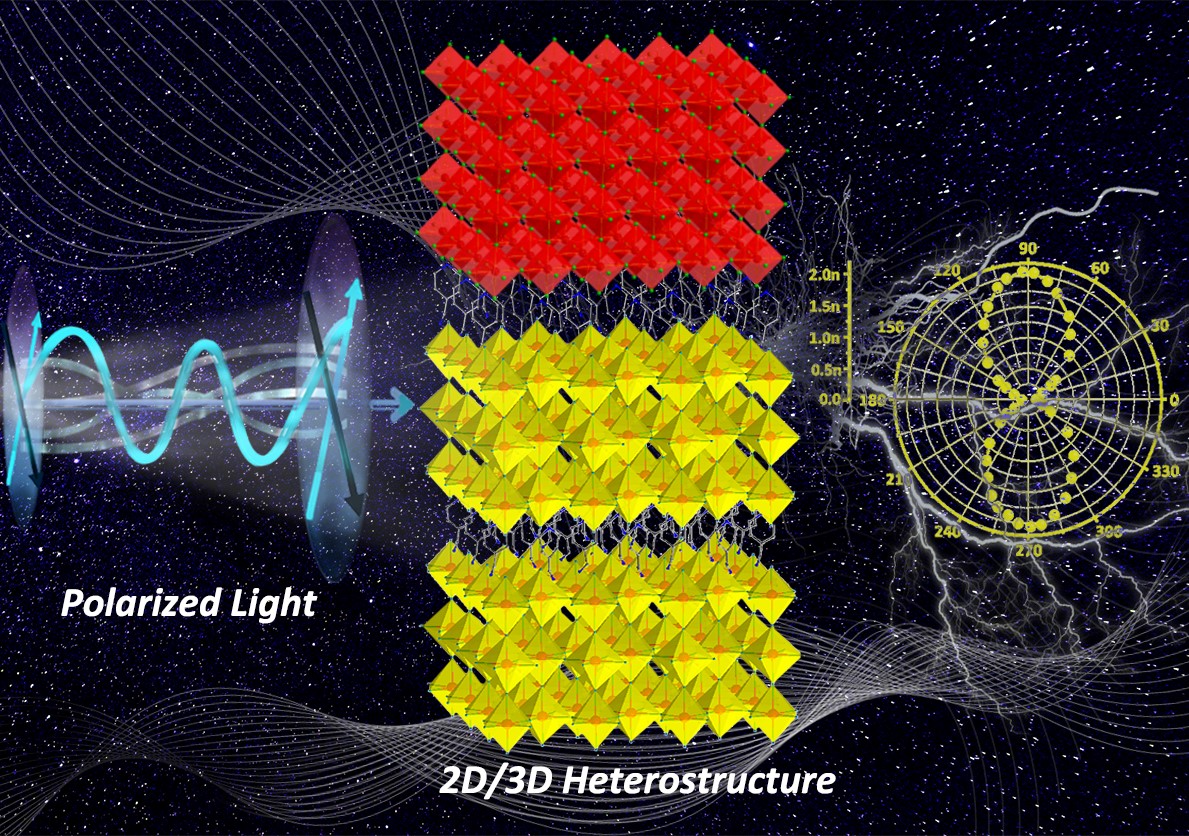Compared with inorganic two-dimensional (2D) materials, the solution accessibility of hybrid perovskites makes it possible to obtain their large crystals at low cost, offering exciting opportunities to incorporate crystal out-of-plane anisotropy for polarization-sensitive photodetection. However, limited by the absorption anisotropy of the material structure, polarization sensitivity of such a device remains low. Thus, a new strategy to design 2D hybrid perovskites with large anisotropy for polarization-sensitive photodetection is urgently needed.
Heterostructures provide a clue to address this challenge. On one hand, construction of heterostructures can improve the optical absorption and free-carrier densities of the composite. On the other hand, the built-in electric field at the heterojunction can spatially separate the photogenerated electron-hole pairs, significantly reducing the recombination rate and further enhancing the sensitivity for polarization-sensitive photodetectors. Therefore, constructing single-crystalline heterostructures of anisotropic 2D hybrid perovskites would realize devices with high polarization sensitivity.
In a recent study published in National Science Review, the research group led by Prof. LUO Junhua from Fujian Institute of Research on the Structure of Matter, Chinese Academy of Sciences developed a 2D/3D heterostructure crystal, combining the 2D hybrid perovskite with its 3D counterpart, and achieve polarization-sensitive photodetection with record-high performance.
The researchers developed devices based on the heterostructure crystal deliberately leverage the anisotropy of 2D perovskite and the built-in electric field of heterostructure, permitting the first demonstration of a perovskite heterostructure-based polarization-sensitive photodetector that operates without the need for external energy supply.
Notably, the polarization sensitivity of the device surpasses all of the reported perovskite-based devices; and can be competitive with conventional inorganic heterostructure-based photodetectors.
Further studies revealed that the built-in electric field formed at the heterojunction can efficiently separate those photogenerated excitons, reducing their recombination rate and therefore enhancing the performance of the resulting polarization-sensitive photodetector.
High polarization sensitivity up to 17.6 is successfully achieved in self-driven polarization-sensitive photodetector based on a single-crystalline 2D/3D hybrid perovskite heterostructure which is grown via a delicate solution method.This innovative study broadens the choice of materials that can be used for high-performance polarization-sensitive photodetectors, and correspondingly, the design strategies.

Illustration of the Research (Image by Prof. LUO’s group)
Contact:
Prof. LUO Junhua
Fujian Institute of Research on the Structure of Matter
Chinese Academy of Sciences
Email: jhluo@fjirsm.ac.cn